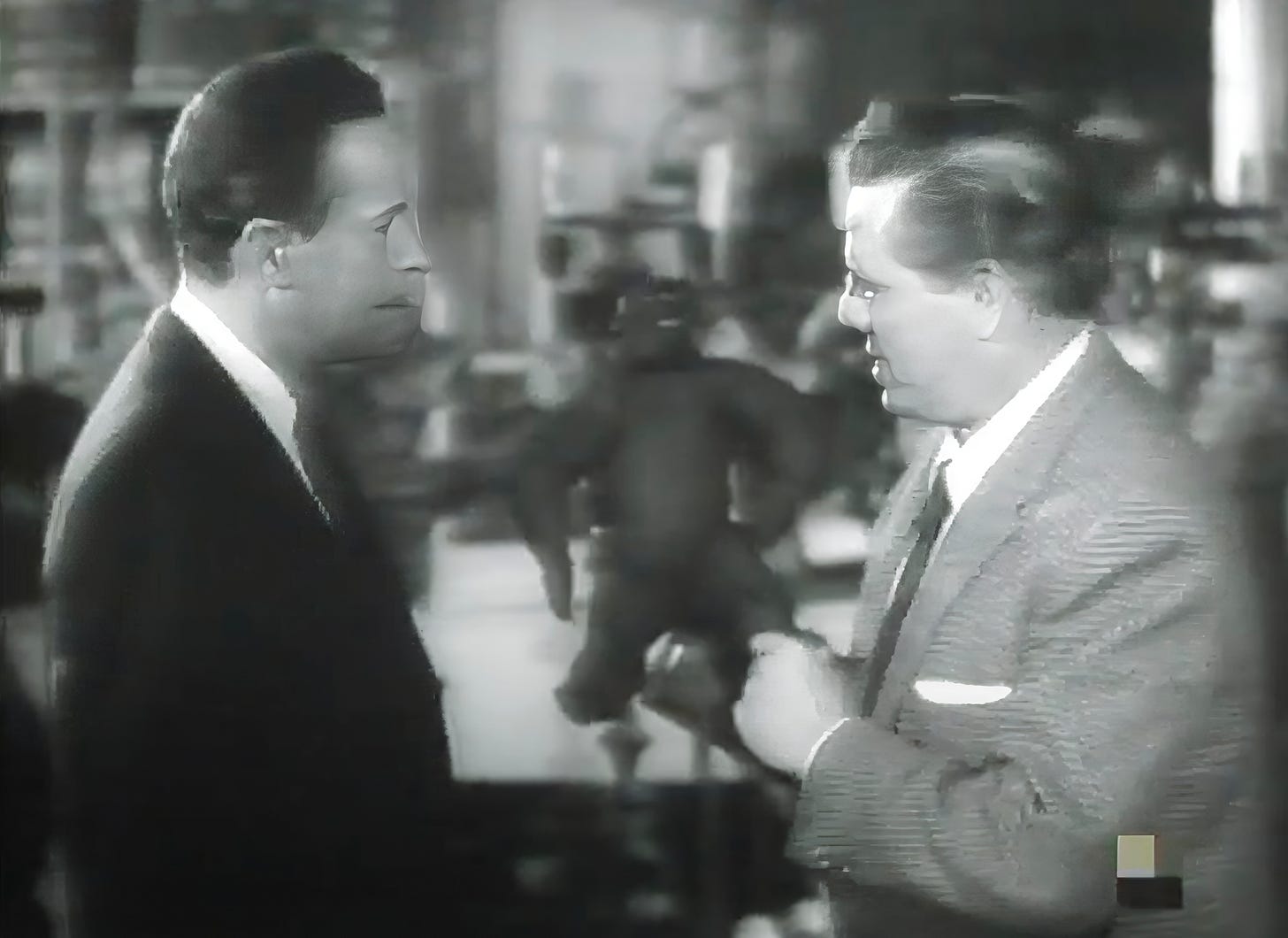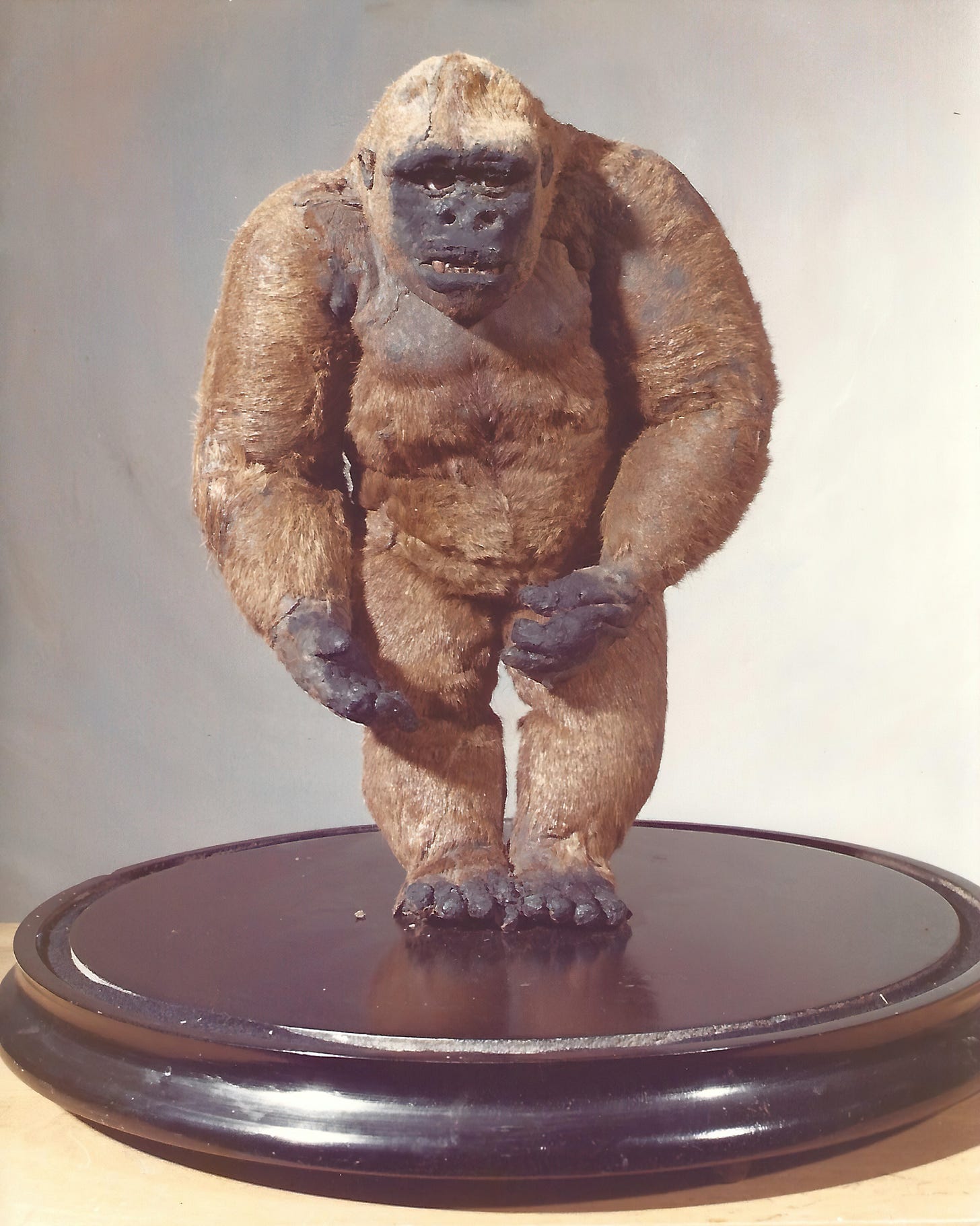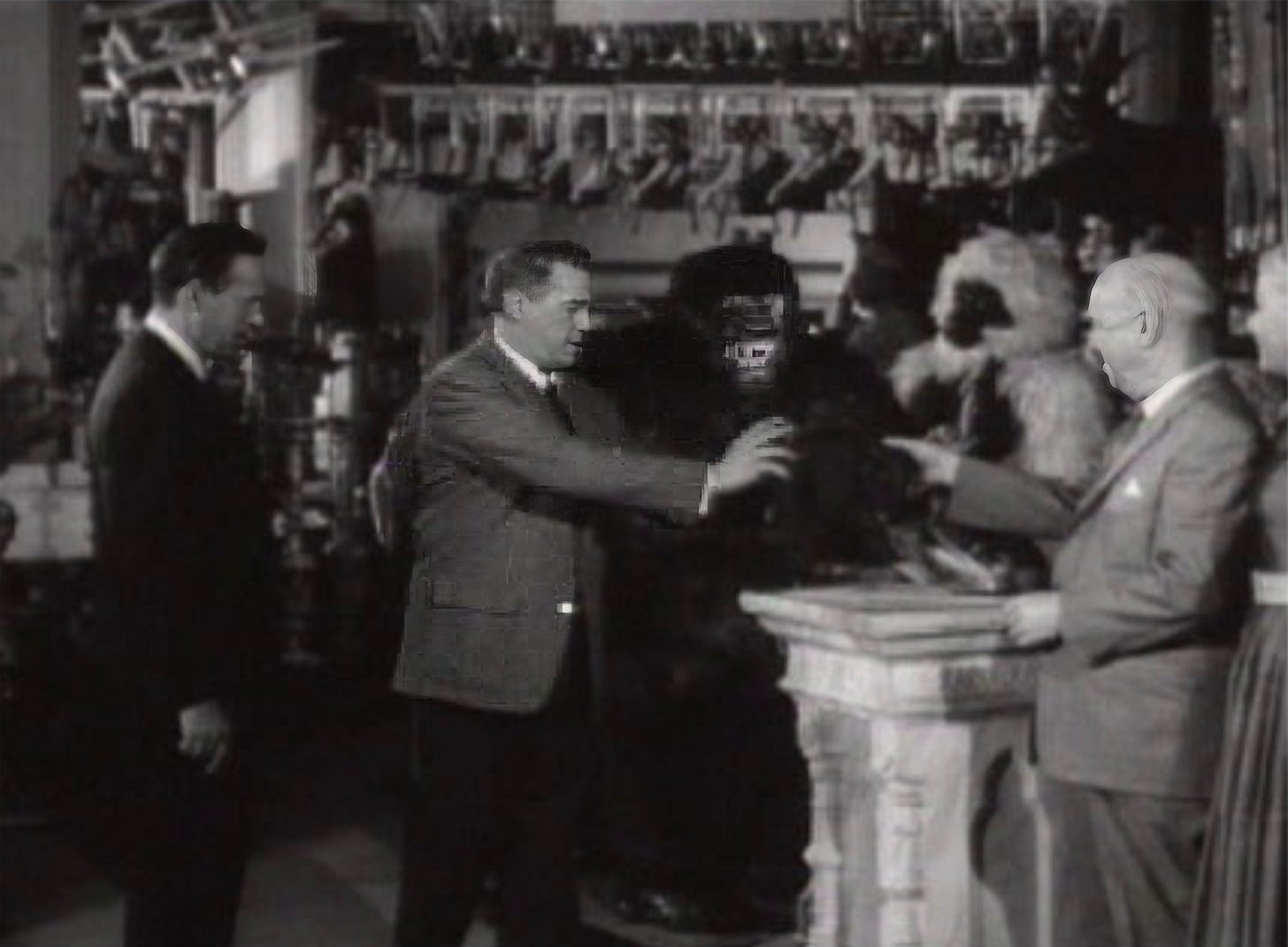FROM THE ARCHIVE: King Kong Lost and Found Part 2
The continued quest for lost, misplaced, and mislabeled artifacts of King Kong
If you read Part 1, I’m pretty certain you sensed a cliffhanger at the end when I mentioned learning via a microscopic footnote in a book (see below) that an actual stop motion armature of King Kong himself from the 1933 King Kong film “…is owned by Clark Wilkinson of Baraboo, Wisconsin.”
As most midwesterners know, Circus World Museum is also in Baraboo; it was mistakenly cited as the actual home of the artifact in many other reports I subsequently dug up. Numerous eyewitnesses swear to have seen it, and claim that this specimen is in near-perfect condition.
I also remember stumbling upon this article, dated May 5th 1977, in my hometown paper:
I hadn’t seen the story in decades, but remembered very well the “Kong section.”
Twenty years ago, the original King Kong came to visit Clark Wilkinson. The big ape never left.
But Wilkinson, 69, a retired insurance agent who would probably get an Oscar if there were awards for movie fans, doesn't mind the gorilla guest.
In fact, Kong holds an honored place in Wilkinson's museum of film memorabilia which takes up all eight rooms of the basement of his ranch style home here.
He speaks about the hairy star of the 1933 classic as if he were an old friend.
“He doesn't look like he did," Wilkinson admits about King Kong. “He's lost a lot of hair, but I've got him under a glass dome and the temperature is cool, so he could go on indefinitely.”
The original Kong, the beast that was killed by beauty in the form of Fay Wray, is actually only 18 inches of light steel framework cover by bits of rubber and rabbit fur.
In contrast with the 40‑foot hydraulic powered Kong' in the $23 million 1976 remake of “King Kong,” the original giant gorilla swatted airplanes from atop the empire state building by means of an antiquated process known as single frame stop action.
“They could move him a little bit, film one camera frame, move him a little bit again,” Wilkinson said. “They had to do this all day and night to get 30 seconds' worth of film.”
Wilkinson received the figurine as a gift from Ernest Schoedsack, co‑producer of the original $700,000 version of the movie.
“I visited Schoedsack in California and afterwards he sent it to me and told me that was Kong,” said Wilkinson, who said he may have the only remaining model of the one used in the filming.
Kong's hallowed place is in Wilkinson's “horror monster room” along with other prizes such as Bela Lugosi's cape from “Dracula,” a coffin containing the mannequin of Frankenstein's daughter and the likenesses of Peter Lorre, Bette Davis and other stars who were “decapitated” in thrillers.
No pictures accompanied the article. (You just expended a half page of newsprint talking about a super-cool film artifact — why bother with a photo?)
Could it be true?
The major attraction in Baraboo, Wisconsin—besides Clark Wilkinson’s basement museum of Hollywood memorabilia—was and is the Circus World Museum. Total distance from my childhood home to Baraboo is 130.49 miles, creating a total estimated drive time of two hours, seven minutes
So close, and yet so far. I was still four years away from my driver’s license, and could no sooner convince my dad to go South to Baraboo than I could have talked him into driving to Spain.1
Don’t Give Up …
It wasn’t until nearly twenty years later—1994—that I resolved to solve the mystery of the “Wisconsin Kong” via a magazine article I wrote for a now-defunct publication called Baby Boomer Collectibles. (One of the great aspects of being a writer is the fact that you can, now and then, indulge personal quests for pay.) My article would seek to solve once and for all the enigma of the Baraboo Kong as well as the disposition of other props from the 1933 film that had popped up now and then on TV in the seventies (during the De Laurentiis heyday) and eighties (as part of various fiftieth anniversary festivities).
Though he’d be nearly ninety years old by this time, my first call was to Baraboo to get a listing for Clark Wilkinson. Imagine my excitement when, after dialing the number for a “C. Wilkinson” in Baraboo, an elderly woman answered the phone.
“Oh yes,” she said. “Clark is here.”
“This is Clark Wilkinson.” He sounded a bit like my wife’s grandfather, a man who wore a suit every day of the week. I straightened up in my chair and introduced myself, finally asking, rather bluntly: “Do you have King Kong in your basement?” (Perilously close to “do you have Price Albert in a can?”)
“Well, I sure did for many years,” he answered. “I received him in response to a letter I wrote to Mr. Schoedsack. He sent it with a note saying, you know, ‘Keep it covered.’”
I was astonished. He explained that he’d since sold it to “a young fellow and his girlfriend,” but could not recall the name of the person. He also sold the note from Ernest Schoedsack and had no copy.
I would have been completely incredulous if it wasn’t for Wilkinson’s complete lack of guile. “I exhibited him under a glass dome, and a lot of people were able to see him in my museum,” he went on. It became clear where the “Kong in Baraboo” stories had come from.
“For seventeen years I had eight rooms full of displays in my ‘Hollywood Museum of Movies,’” he explained. “I closed up the museum in 1965...or when I was 65—one or the other; it's hard for me to remember. I still have a coffin from Hal Roach studios that I plan to be buried in.”
So, I asked, do you have a picture of Kong?
“One moment,” he replied. I could hear him talking with his wife: “He wants to know, do we have a picture.” Suddenly I was on the phone with Mrs. Wilkinson.
“We have one picture, a very nice one, in a frame handing on a wall. Would that be all right?”
Our conversation took place before instantaneous online communication became ubiquitous, if you can imagine. Very few people were using this newfangled “internet thing,” so I spent the next thirty minutes explaining the concept of Federal Express overnight shipping to the Wilkinsons, hanging up briefly to dispatch a truck to their house. I asked them to call me collect when they saw the truck, and I talked them step-by-step through the process of packaging the photo for the driver.
In twenty-four hours I would finally see for myself the “King Kong of Baraboo!”
Wrong Kong
A careful look at one of the only surviving picture of Wilkinson and his "Kong" solved the mystery; he actually had, in wonderful condition, one of the models used by Willis O’Brien and understudy Ray Harryhausen for 1949's Mighty Joe Young.
Yes, once again: the wrong Kong. That's not to say Mr. Wilkinson doesn't look sharp — on the phone he sounded like a bow tie guy and I was pleased to see my suspicion confirmed — but the stop motion puppet he's holding on a platter is clearly the title character of the 1949 film Mighty Joe Young; Wilkinson (and perhaps Schoedsack, whose eyesight was nearly completely gone in later life) had mixed up their mythic gorillas.
I called Mr. Wilkinson and gently explained the situation. He didn't seem greatly pained by the mistaken identity, and the person who eventually bought the Mighty Joe Young puppet from him in the mid-seventies certainly knew what he was getting.
I began to unearth other photos of Wilkinson and the armature, all mislabeling the figure as Kong.

I learned that the "young fellow" who bought Joe from him many years ago is special effects artist Lyle Conway of California, who still owns it.
Clark Wilkinson passed away in 1995, just a year after I’d spoke to him. As he’d long promised, he was indeed buried in the coffin featured in the film Dracula’s Daughter.2
Mistaken ID
Many years later I was in contact with Mr. Wilkinson’s son, who later wrote about our encounter:
SO, why did Clark Wilkinson deceive the world for decades by claiming that he possessed the 'real' King Kong? I recently spoke with John Michlig who gets some credit for 'outing' MJY. He interviewed Clark in the '90's not too long before his passing and quite a while after Kong/MJY had passed on to other hands. I asked him for his reaction when he told my father that he didn't have the real Kong. He indicated it was a bit of a sense of resignation - perhaps indicative of someone in his latter time on earth. Michlig also interviewed the purchaser of MJY. He indicated he was happy with his purchase and for a time after receiving his new prize, did not answer his phone in case of seller's remorse.
Back to the introductory question! Attached is the letter he received from Mr. Schoedsak not too long after meeting with him in CA and agreeing to become the recipient of what he believed was King Kong. So one question is what did Schoedsak believe. It seems unlikely that he didn't know it was MJY.
Regardless, although I am a bit biased, I don't believe that my father actually knew he did not have the real thing for many years.
The letter Ernest Shoedsack sent to Mr. Wilkinson with the armature made it pretty clear that he truly believed he was dealing with King Kong:
Who wouldn’t believe that?
I Love Desi
This, by the way, wasn’t the first time Mighty Joe was mistaken for Kong.
In 1957, Lucy and Desi Arnez’s Desilu Productions Inc. acquired RKO Pictures’ production — and storage — facilities. You can imagine the treasures they found in every nook and cranny.
Or, you can watch this pretty interesting tour video, wherein Desi keeps a butt burning for the duration, some sort of cigarello or cheroot or tiperillo or something. Jump ahead to 3:28 and you’ll see William Frawley discover a Mighty Joe Young model he mistakes for Kong. When he shows it to Desi, the fact that he's about to handle a fur-covered prop of some historical significance does not prompt him to seek out an ashtray. He simply affects an elegant two-finger grip on his sweet tobacco stick as he takes the expensive, chemical-packed prop from William Frawley (note his right hand in the screen capture below) to show the show’s host.

Fortunately, Mighty Joe survived.
So, is this the end of our journey? Hardly. In the next episode — I find the real thing in Bob’s Basement….
Our family was all about going North (referred to as “Up North” or “Up Nort’ “) to Rhinelander and Minocqua for fishing and swimming. We made a few excursions to visit family in Milwaukee, but a side trip to see a small monster model in an elderly man’s basement was not in the cards.
I have photographic evidence from his funeral ceremony that I will spare my readers.









